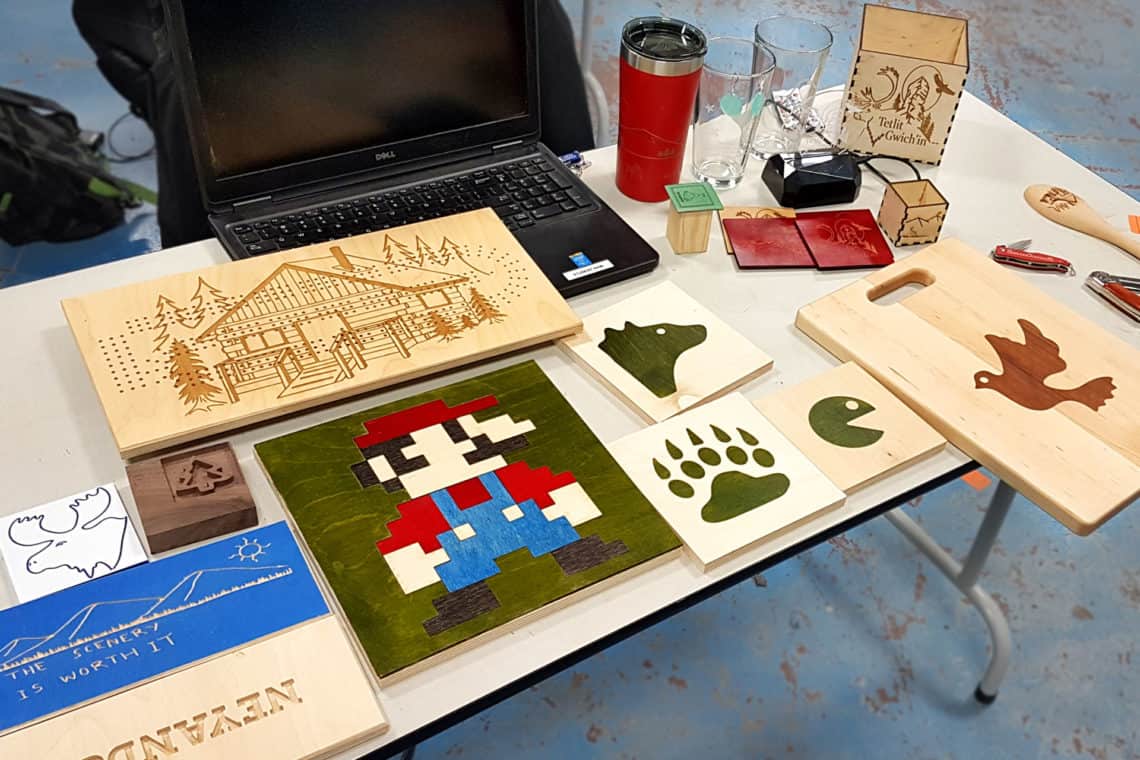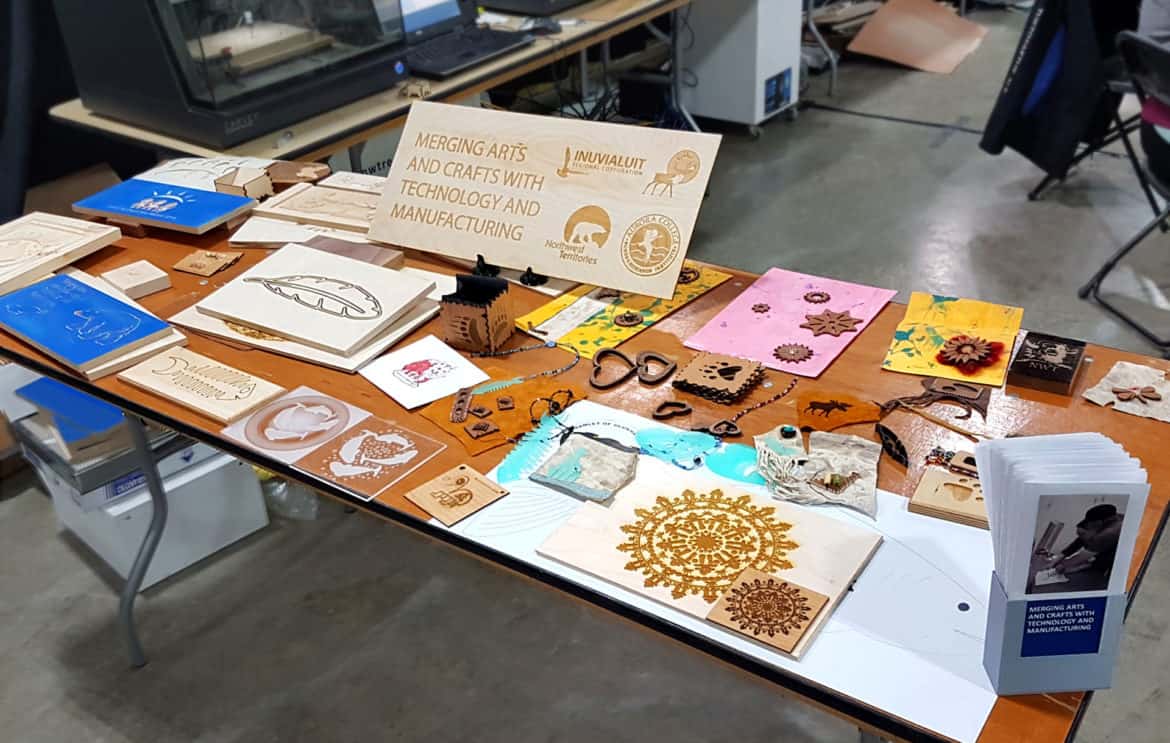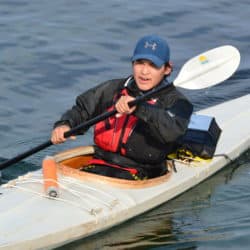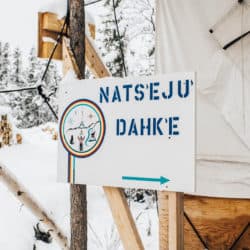This is the second in a series of profiles about past winners – “laureates” – of the Arctic Inspiration Prize.
“By the North, for the North,” the Arctic Inspiration Prize celebrates and provides seed funding every year to groups working to develop new and creative projects that solve challenges in the North. Nominations for the 2021 prize will be accepted until October 13 at 11:59 p.m. PT. There are no limits to the type of initiative that can apply; prizes have been awarded in the spheres of technology, environment, education, socio-economic development, heritage, arts and culture, and skills development.
***
Canada’s North: a landscape consisting of diverse textures of lush forests, glacier-capped mountains, and barrens that transform from a sea of purple flowers in the summer to brilliant shades of orange in the fall to a desert of sparkling white throughout the winter. Turn to the skies and extraordinary northern lights illuminate the winter darkness. The North is a rich source of inspiration for many talented Indigenous artists and crafters skilled at capturing the beauty that surrounds them and translating it into carvings, paintings, prints, jewellery, sewing, metalwork, and other media.
Yet many of these artisans lack the skills and resources to establish and manage their own businesses. Instead, they sell their work through an underground economy, which often means they don’t benefit as they should from the proceeds of that work, impeding their ability to develop into successful and profitable artists.
Sue McNeil, the former manager of the Inuvialuit Community Economic Development Organization (ICEDO), saw an opportunity to fill this gap. She envisioned an association of northern Indigenous artists and crafters focused on self-determined quality, products, prices, and markets that would support sustainable and culturally valuable lifestyles in the Inuvialuit Settlement Region (encompassing the most northerly portion of the Northwest Territories, the North Slope of Yukon, and a large portion of the Beaufort Sea) and Gwich’in Settlement Area (on Inuvialuit’s southern border in the NWT).
The region is culturally vibrant, home to renowned beaders, sewers, carvers, and printmakers, but McNeil was well aware of the challenges many of these artists and crafters faced in translating their talent into viable, self-sufficient businesses. She also knew the ICEDO was in a position to do something about those challenges.

She identified two driving questions: “How can artists have more say in what they do and more say in their finances? What business skills do they need to be self-determined, sustainable business owners?” For McNeil, it was about helping the artists help themselves. If she succeeded, the artists would have better opportunities to be successful in their work and would become more comfortable promoting their businesses while supporting each other.
With these ideas and challenges in mind, McNeil convened a committee of local artists and crafters to build out the framework for a regional association of professional artists and crafters.
In the Northwest Territories, the government runs the two largest art cooperatives. The artists’ committee decided early on that they did not want to be part of either of these existing co-operatives, nor did they want to set up another one. They wanted to maintain their independence and rely on market support and each other rather than have the government intervene. They also didn’t want to have to go to the Inuvialuit Regional Corporation (IRC) or the Gwich’in Tribal Council (GTC) for approvals. They knew that if they received funding from either the IRC or the GTC, they would also need approval on any decisions related to the funds.
Knowing it would take time for artists and crafters to come forward and trust a new organization, the committee focused on breaking down barriers to participation. They worked to demonstrate that the organization would be focused on the interests of the artists and crafters first, and not on the organization making a profit. They gathered input from artists about the challenges and obstacles they faced. From these discussions emerged a clear desire to focus not just on traditional art, but on generating art in non-traditional ways – merging arts and crafts with technology and manufacturing.

The committee then tackled the process of putting together an application for the Arctic Inspiration Prize (AIP), after AIP ambassador Peter Clarkson, the NWT government’s regional director for the Beaufort Delta, reached out to McNeil to help her navigate the process and to officially nominate the project, now christened “Traditional Techniques Tweaked to Galvanize Indigenous Northern Artisans.” All AIP applications must include an official nomination by one of a network of AIP ambassadors, who seek out inspiring teams with eligible projects, then write and sign nomination letters to be submitted as part of an application. Most importantly, they mentor and support teams as they put their applications together.
For some, that process can be daunting. McNeil’s advice: “Don’t be intimidated – proposals take effort. Reach out for assistance. Find someone who has experience.” Clarkson was that person for McNeil and her team, providing advice and support. They also solicited letters of support from other individuals and organizations to help with their nomination. “Stay committed and don’t give up,” McNeil advises.
The Traditional Techniques team was awarded $500,000 in 2018 to create the artists’ association. This seed money provided the opportunity for local artisans to develop their skills and build confidence as sustainable business owners.
“The true value of the AIP is there are no restrictions on when or how you can spend the prize money. You can use the money to secure other funding, or you can combine the prize money with other funding. Take the time to plan and use the money wisely,” McNeil advises.
The committee took this advice to heart, planning for and establishing the association while helping people build their artistic, financial, and business skills, unfettered by the pressures that can come with other types of funding, where money must be spent within a certain time period.
Don’t be intimidated [by the application process] – proposals take effort. Reach out for assistance. Find someone who has experience.
Sue McNeil
One of the first tasks that the group, now known as The Artists Hub, took on was finding a space where artisans could work together. In 10 short weeks, the team procured and created a space that could accommodate up to 30 traditional artists for workshops and training. They achieved this by securing a partnership with a local makerspace, which provided a place where artists could come together and collaborate while sharing tools, resources, and knowledge.
While the pandemic has slowed the project team’s work, they have artists in Ulukhaktok who are keen to become financially sustainable, and when restrictions are lifted, The Artists Hub will visit the community. They will meet with local artists and crafters who are interested in taking over and managing the local artists’ co-op, the Ulukhaktok Arts Centre, and turning it into an artists’ association. The Artists Hub will share what they learned in the process of establishing themselves and offer support.
A key to this project’s success was how the committee listened to the artists and crafters and worked collaboratively to implement their vision. They created an artists’ association that supports sustainable business ventures and is improving local artisans’ skills – ensuring authentic, high-quality products – and building confidence in the members as sustainable business owners. What started as a desire to help Indigenous northern artists and crafters who lacked the skills and resources to manage their own businesses resulted in the Traditional Techniques team and an artists’ association. With the support of the AIP and The Artists Hub, artists and crafters have come together to support one another and are contributing to the economic development of the Inuvialuit Settlement Region and the Gwich’in Settlement Area.


